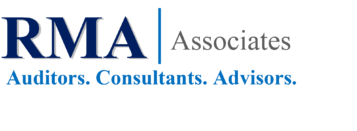From the Big Four firms, to small family-owned firms, all the way to completely virtual firms, communication is the backbone of a productive work and service environment. While businesses today have more communication channels available than ever before, clear communication strategy still needs to be in place and nurtured in order for accountants to be their best selves, both as colleagues and professionals.
In addition to tried-and-true methods like phone, text and email, there’s an endless array of tools available for specific kinds of communication both between team members and with clients. Understanding how to deploy each of these channels for maximum effectiveness and to reduce stress, rather than create it, is a crucial part of operating a successful accounting practice. Whether you realize it or not, you rely on these communication channels to keep up with the rapid pace of your day. Leveraging them correctly can be the difference between creating a winning culture versus burnout.
This article is not an attempt to provide an overview of communication channels available or the best option in each category. There are plenty of great resources to consult for those decisions. Instead, I want to provide a framework for how to ensure that you implement these solutions in a way that makes them both accessible, productive and not create more stress. When you approach adoption with a clear purpose and defined policies, you limit the risk of creating clutter and confusion.

Internal vs. external communication
The most basic distinction between communications channels are those that are customer facing and those are for internal purposes. These two will be mutually exclusive in some cases but not necessarily in others. You may use certain chat communication channels, like Slack or Google Hangouts, only between team members. On the other hand, you may use Slack and work email for both internal and external purposes.
When it comes to delineating methods in this context, what matters isn’t what channel you choose for which purpose, but rather that everyone on your team understands your policy. It’s easy to get into the hype of a new technology tool and want to implement it right away. However, there is more than just the technology to consider — there is also the human connection. Both are equally important, so when creating an implementation plan, it’s important to define what the ROI is of using a new communication tool, what it replaces and how it helps either the people you are working with or your customers.
The advantage in siloing off communication channels with clients is to encourage responsiveness. Many times emails are met with no response when they’re being sent to clients, even though it is a high priority for you. When setting up your communication infrastructure, it is important to ask your clients how they like to receive communication and where you may get the fastest response. If you are a person that likes to leave voicemails, but your client doesn’t like to answer their phone or listen to them, you may have a breakdown in the efficiency of your workflow. Defining this upfront, and ensuring you have the technology to meet their needs, can help you and your team to be more effective and create a better client experience overall.
Speciality channels
In addition to channels that serve myriad functions, there are those that are designed for a narrower purpose. You may not consider a project manager solution a communication channel, but for your purposes it is. Selecting these services, whether for email marketing or in-house CRM, should be done on a case-by-case basis. These services can be exceptionally effective in the right circumstances, but they should never be redundant. If you have the capability to execute with the resources at your disposal, there’s no need to add another one.
This can be critical to ensure you are moving a client through the life stages of the engagement they signed on for. By setting auto-responders and automated task reminders, you can make sure you are delivering the work to meet their expectations. Additionally, it creates a pipeline of additional add-on services to eventually propose when they are ready. When this information is locked up in paper or the original person that sold the engagement’s head, there can be revenue left behind. By allowing the technology to do the heavy lifting, and letting it think for you when you are at your busiest, you will not only delight your clients, but uncover the gold that is right there for you to mine.
How to make a channel stick
In the days before cord-cutting and binge watching, all of us had TV subscriptions that included hundreds of channels, but how many did we really watch? Too many options can leave you without focus or direction, so you have to ensure that you aren’t carrying deadweight among your lineup. Nobody is going to remember to turn to the equivalent of channel 186 because that’s where they’re supposed to go to request a new keyboard.
Implementing a new communication channel should involve the same amount of research, testing and training as any other tech innovation. Philosopher Marshall McLuhan once said that “the medium is the message.” As a leader in your workplace, you have to decide which media are best suited to relay the messages that keep you growing and thriving. It is important to get feedback from your team that will be using it along the way. Is it something they would want to use, and will it be more effective than the current process? When I first implemented Slack in my yoga studio, the staff didn’t want to change from email communication. I asked them to try it for 30 days and then we would make a decision. Anytime they didn’t use it, I responded back to them on Slack. After they used and understood it, we never went back.
Don’t forget the basics
All of these future-facing communication solutions are great, but they aren’t a replacement for human interaction — oral communication and writing. In fact, these novel channels flourish when they are backed by href=”https://www.accountingtoday.com/opinion/accountants-under-pressure-creating-a-more-mindful-workplace” target=”_blank” rel=”noreferrer noopener”>mindful awareness and empathetic communication. Being a good communicator is platform agnostic, but learning how to use each channel effectively comes down to education.
If you’re willing to do the homework and legwork, you can explore all sorts of forward-thinking communication options. Just make sure you’re putting your time and effort into something that will actually benefit your team and clients, and create greater human connection, rather than less.
Amy Vetter President and CEO, QuickStart Training Inc.




No responses yet